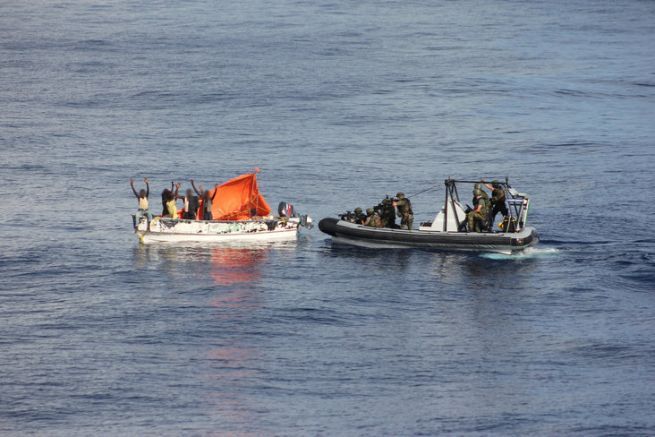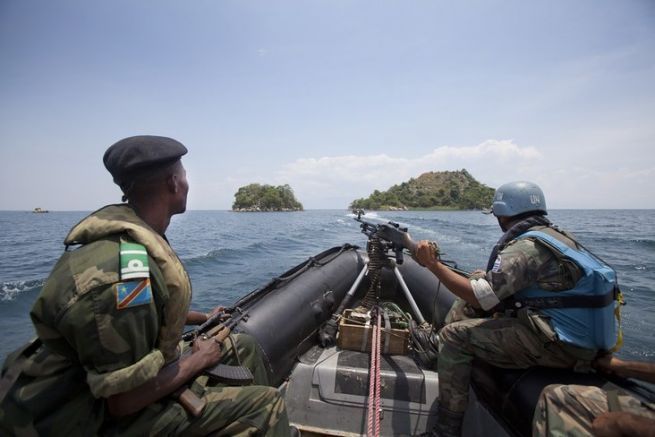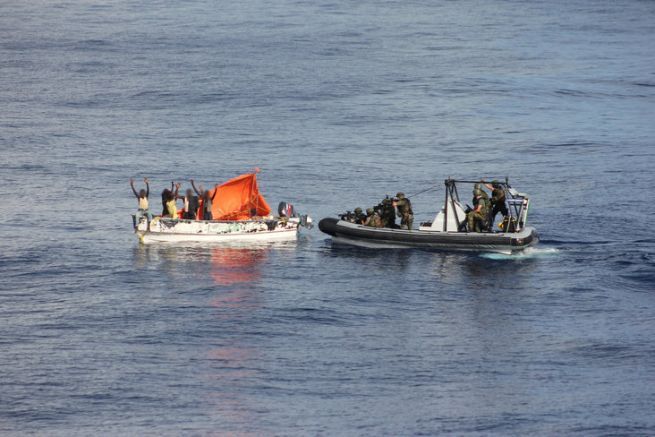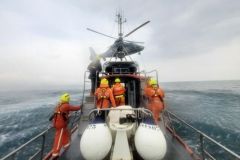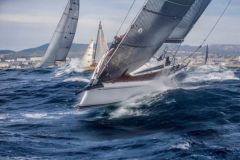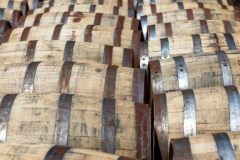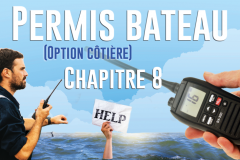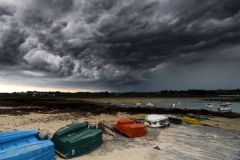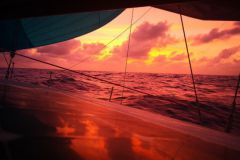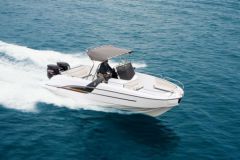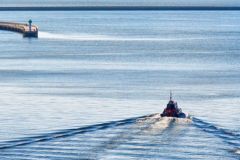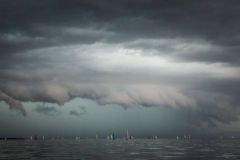Let's be clear on one thing. The best way to guard against acts of piracy is not to go to a pirate-prone area . If, despite everything, you plan to cross in these waters, certain precautions can be taken to minimize the risks.
The Threat Triangle
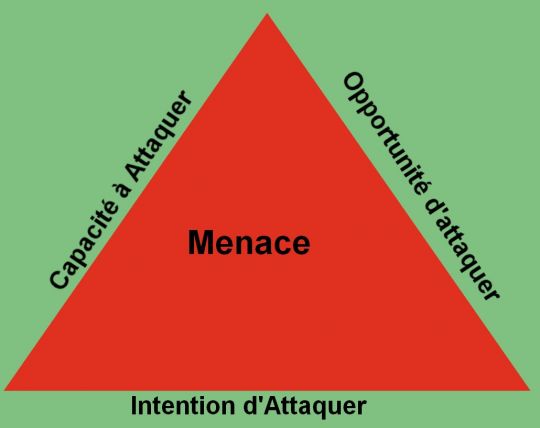
The principle of the threat triangle is trivial (much like the triangle of fire). You only need to eliminate one side of the threat to see it drastically reduced.
- A threat is always formed by the ability of the attackers to carry out the attack, the timeliness of the attack and the intention of the attackers to carry it out.
- As boaters, we have no control over intent. It often depends on economic conditions that are beyond our means.
- We are seen as opportunities because of the value - supposedly real - of the boats and the equipment (GPS, telephone ...) transported. This point is difficult to change.
It is on the ability to attack, however, that we have the opportunity to act.
Acting on the ability to be attacked
Most of the recommendations we make here are, precisely, based on the reduction of this capacity for action.
- Detecting the approach of a boat
Systems such as OSCAR s are particularly effective at detecting what is above the water, including small boats, which radars will most often be unable to do. If the current version of the product does not provide sufficient field of view, the coupling of 3 detector heads would do the trick. And we've heard that a major oil company might be interested in protecting its ships.
- Decrease capacity for action
Retract anything that will make it easier to get on board. Put away bathing ladders as well as cutlery. If you don't need them, remove fenders and other bow fenders.
- Sailing in a group
Several friendly ships in the same perimeter cause potential pirates to be suspicious. You can set a default alert code. For example, one radio call per hour, which you will write down on paper whether or not it took place. In the event of an attack, the victim boat will not be able to make this call and will be identified as being in danger by its companions. If you don't know which boats you are going to encounter, why don't you make an announcement on the Yacht Club de Bateaux.com ?
- Maintain communication equipment
The "Distress" button on the VHF has a function for tracing a pirate attack. It is essential that all means of communication and location on board are working (GPS, VHF, satellite phone, AIS beacon, EPIRB beacon ...).
- Switching the ship's AIS to silent mode
Although a useful security tool, AIS is also an excellent means for pirates to locate the presence of vessels considered attractive. Of course, this stop should be limited to the crossing of a risk area, the AIS transmitter should be switched back to eloquent mode as soon as possible.
- Maintain contact with the ground.
We recommend that you have a person on shore who will be informed of your route and the ETAs at your various waypoints. You will provide this person with all the necessary information if necessary. Include everything from crew composition to blood type, boat specifications and MMSI number. A no-questions-asked alert protocol will be established with this person. Thus, agree to call you once a week on Sunday afternoon for example. If you do not call this person, he or she will have to trigger the alert within a 6-hour time slot, for example, with the gendarmerie or the national police.
- Maintain a permanent anti-piracy watch
This watch will aim at observing that a vessel is approaching and appears threatening and, if necessary, activate the necessary means of protection or deterrence, such as a siren, alarm, whistle or foghorn will be useful. The idea is to attract the attention of your crew and the vessels you are sailing with.
- Do not anchor too close to the coast in sensitive areas
The closer you are to the coast, the easier the attacks will be. In sensitive areas, especially in extremely sensitive areas, we recommend that you keep as far away from the coast as possible.
- Avoid night cabotage
Your habits are quickly noticeable and pirates will be all the more inclined to attack if they know your next destination. If you want to make a mess, however, do it in a relatively illogical way, for example by adjusting the length of the stages or by retracing your steps.
- Use presence detectors
If a person comes on board, it will set off a searchlight, set off an alarm or dog barking. The objective here is as much to get the crew's attention as to scare off the attackers. All that remains is to have prepared the crew's reaction beforehand.
- Remaining discreet during stopovers
When ashore, avoid talking about your plans in public. It is impossible to know whether the person sitting next to you or the salesman in a hardware store is completely honest. Prevention is better than cure, so discuss your plans only with people who feel the need to know them. And if you have questions about where to go next, shuffle the questions around to muddy the waters as much as you can.
- Ensuring guard towers in the most sensitive harbours
The watch kept at sea should also be carried out when anchoring in sensitive ports. Apply here the same warning principles as at sea.
- Register with the French Naval Volunteer Cooperation (CNV)
The CNV is an initiative of the public authorities and private actors (cargo, yachtsmen ...) aiming at listing events and reporting them to subscribers. Registration is done by contacting, by email, the address centcoopnav@marine.defense.gouv.fr. You can consult the government's website on the XXXhttp://www.sgdsn.gouv.fr/communication/instruction-interministerielle-relative-a-la-cooperation-navale-volontaire/XXX Voluntary Naval Cooperation
- Contact MICA (Maritime Information Cooperation & Awareness Center)
MICA is the French centre for the analysis and assessment of the global maritime security situation. It is able to provide, to any applicant, personalized security information relating to its area. The website of the MICA will have to be consulted before your departure and during the trip.
- Announce you to the military authorities when you are in the area
Obviously, given the risks of corruption, we recommend that you report to the authorities of "safe" states: France, the United States, Great Britain, to name but a few. The MICAs mentioned above can tell you how to proceed.
Avoid high-risk areas
In a word, the safest course of action, once again, is to avoid going into high-risk areas. We are well aware that if this could interfere with a dream cruise program. Your safety depends on that avoidance.
Most of these measures are common sense and logical. Certainly their reading from the ground, in a quiet place, seems to push doors open. But having read them precisely in a calm environment will allow, once cruising, to trigger and maintain healthy safety reflexes. These reflexes will allow you to savour your moment on the water.
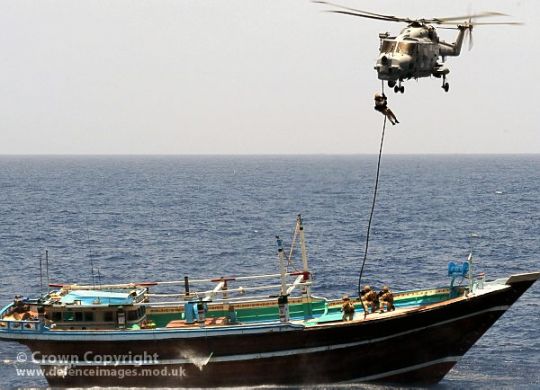

 /
/ 